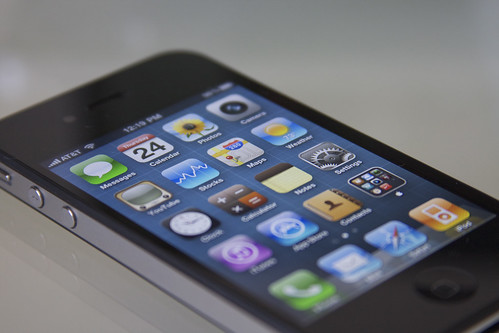Apple to Inaugurate September with Music Event
/ Apple just sent out invitations to prominent members of the tech media for a special event on 1 September. This is no doubt, judging from the Apple emblazoned guitar on the invite, the annual September iPod refresh event.
Apple just sent out invitations to prominent members of the tech media for a special event on 1 September. This is no doubt, judging from the Apple emblazoned guitar on the invite, the annual September iPod refresh event.
The rumor mill suggests a FaceTime compatible iPod touch and a new Apple TV. I really think these aren’t far off the mark. But what else? Will there be any surprises?
iPods
I definitely think the new iPod touch will sport a FaceTime camera on the front. It’d be great if it included a rear still and video camera on the back (the rear camera was rumored for last year’s model). If Apple were to stick with the same style rear casing, I think they would have to make the iPod thicker to accommodate, internally, both a front and rear camera. But perhaps they will keep it the same thickness (at the thickest point) and square off the rest, much like the iPhone 4. Or perhaps they’ll just do the front camera. Either way, I am fairly positive it will have the front FaceTime camera. How else will there be tens of millions of FaceTime products by year end? Lastly, I think the iPod touch is a shoe-in for the A4 processor and Retina Display.
As for the other iPods in the family — nano, shuffle, & classic — I am unsure. Last year the nano got video. Someday, though I am unsure of the timing, I think the nano will go touchscreen with iOS. But that is likely a couple years off. My guess for the nano is a better camera, and a better screen.
For the shuffle one can only hope they put controls back on the device. The design was darn near perfect in the second generation, and last year’s removal of all controls from the device was a gross mistake. It is the chief complaint I have heard from folks I know who have it.
As for the classic, I said last year that I thought it was going away. If the iPod touch reaches 128GB of storage, I would err on the side of it finally dying. I think Apple’s future for portable consumer electronics lies in flash storage, not spinning hard drives. I’m sure Apple would get rid of them in laptops of the capacity and price were feasible. If the iPod touch doesn’t reach a 128GB capacity, I see the classic hanging on for one more year.
iPhone
We’ll get a rundown of new features, like GameCenter, in iOS 4.1, and a release date. My guess is day and date of the event.
As for the iPad, my guess is they’ll promise it for iOS 4.2 later in the year, and blame the delay on Antennagate.
Speaking of Antennagate, I bet we’ll hear a follow-up on that, and whether or not the Case Program will continue.
Apple TV
I think the rumor mill is dead on with a small storage, content streaming device. Heck, it may even run some variant of iOS. The dream would be that iTunes would charge you a nominal fee (say, $30 a month?) in exchange for unlimited all you can eat streaming á la Netflix Instant. It was previously rumored. But the latest rumors of 48-hour 99¢ TV episode rentals sounds more like reality (and far less endearing). Perhaps it will let you install apps for services like Netflix or Hulu Plus, but at that point, I already have an XBox that does Netflix and will do Hulu Plus in January. Unless the new Apple TV has a sweetheart deal on actually watching content without a cable subscription, I don’t think I’ll care a whole lot.
I am interested how it would be controlled, though. I can’t see the 4-way directional remote working well for a revamped Apple TV.
iTunes
I have desired an overhaul of iTunes for a long time. Every year, iTunes gets more feature bloat and gets even slower. It is one of the most un-Apple applications made by Apple. I said this last year, and I’ll say it again: the greatest feature would be few (or even no) new features, and a complete rewrite and streamlining of what we know as iTunes. And for goodness sake, it’s 2010, why is there still a CD in the iTunes icon? And for the record, I expect to be disappointed yet again. There will surely be a new iTunes version, but I bet it will be the same old feature bloat.
Anything Else?
Maybe. There is always the chance that a “One More Thing” may be lurking in the shadows of the stage curtains. It won’t be a new iPad. That would be silly for a not-even-six-month old product that Apple can’t even make enough of to fully meet demand. I’ll place my chips on sticking to the aforementioned products and no “One More Thing” announcement.







